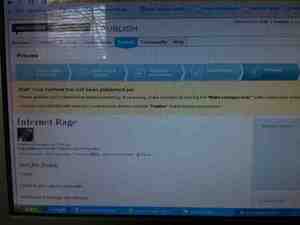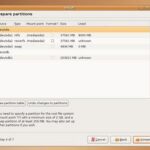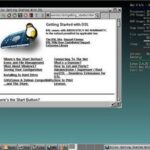If you just bought a new hard drive you might find yourself wondering How to format a hard drive in XP, this is a relatively simple task to accomplish for the PC veteran, but not everyone has been through the DOS wars, and lived to tell about it. So here is a simple explanation, and something to note. Before you can format that new drive you will have to partition it as well, though this is seamlessly integrated into Windows XP.
Configurations,
There are many different configurations you could possibly have, and some of them may include primary, and secondary hard drives. You may be wondering what I mean by that. To explain your primary hard drive is the one you are using for Windows. If you wanted to format that hard drive, it cannot be done using Windows XP, unless you use the installer disk. This is because your windows files are running on the hard drive while you try to format you cannot delete files while the computer is using them, and that is what formatting does it deletes everything, and establishes a data storage format for future use.
Slave drives,
A secondary drive, or slave drive is your secondary drive it is usually used for backup purposes, but sometimes it can be used for a raid array. I will not go into raids for now, but instead simply cover formatting of primary, and secondary drives in standard configuration.
More details,
Before we begin I feel the need to explain what a partition is. A partition is a part of your hard drive, it can be the whole drive or only a certain amount of space. To Windows each partition will look like another drive, so do not confuse formatting a partition on a hard drive with formatting your hard drive completely. If you have a configuration with a secondary partition on your primary drive, you can typically format that extra partition with no effect on your Windows install.
How to format a hard drive in XP for the first time.(Primary hard drive initial install.)
If your reading this from your friends computer, and you only have one hard drive which you haven’t installed Windows XP onto yet. Then all you have to do is insert the install disc into your CD-ROM drive, and boot off the CD.
Most newer computers have “check for bootable CD” already selected as a primary boot option. What this means is, by putting your CD in your drive and turning the computer on Windows XP will load from the CD, ask you if it’s ok to load the installer, and begin the install. Once you see a prompt indicating you should push a key, push any key on your keyboard to allow the install to continue. During this time Windows will prompt you to select a partition and format it accordingly.
All you have to do is select the new hard drive just installed then tell it to format it as NTFS and Windows XP does the rest. This method can also be used to format your primary partition after a Windows XP install if you absolutely must.
If by some chance you have a computer that does not want to boot from CD first, then turn your computer on, and before it tries to load anything press “Del” to get into the BIOS.
Using the arrow keys navigate the menu you see to get to the boot options section, and set primary boot device to CD-ROM. Some times it’s the “F8” key, or “F10” and some computers have a boot up selection menu. If you watch your BIOS post you should get a message indicating what is possible for your computer.
How to format a hard drive in XP from the command prompt.
Assuming this new drive has already been partitioned, you can click on “Start” then “Run” type in “CMD” and you will see a command prompt window. Simply type in format “drive letter” (example “Format C:”) Once you do this you will be prompted that by doing so you will lose all data on the drive. Simply press “Y” to continue formatting.
How to format a hard drive in XP from the GUI(Graphical User Interface)
If you just installed your hard drive, and you are already running Windows XP from a master drive, then simply double click on the “My Computer” icon found on your desktop. If it’s not located there, you will find it in the “Start Bar” in the right hand pane items in the start bar only need to be clicked on once. Now that your in your computer you should see an icon for your new hard drive, simply right click on this icon then click on “Format” and follow the on screen prompts. If this drive has not been partitioned yet, the format program will partition it as well as asking you, what type of partition you would like to make.
How to format a hard drive in XP from the GUI if your hard drive is not showing in “My Computer”
If your hard drive isn’t showing up in “My Computer” you may not have the most recent version of Windows XP or you may have some conflicts, but this is not a big deal. Simply click on “Start” then “Run” and type in “diskmgmt.msc”. Press enter or click run, and you will now see a display of your current disk drives, including USB flash drives. Though flash drives aren’t really disk drives, they are included. From here right click on your new drive and click “partition”, select the maximum size for partition size. The max is already set by default, now select “NTFS partition”, then click ok to continue. Once the drive is successfully partitioned, right click on it again and click on “Format”
Closing,
By now you should know, How to format a hard drive in XP, under many configurations and using multiple methods. If one method doesn’t work for you simply try another. Whatever your reasons for formatting your hard drive remember one thing, if this drive is not a new drive, you are wiping out all the information contained on it. This information will remain irrecoverable once you reinstall Windows and run defrag a few times. Perhaps this is exactly what you want though many times the simplest solution to a root kit, Trojan, or other virus, is to wipe your drive, and if you have no important data on it, then you have no inhibitions to this idea.




